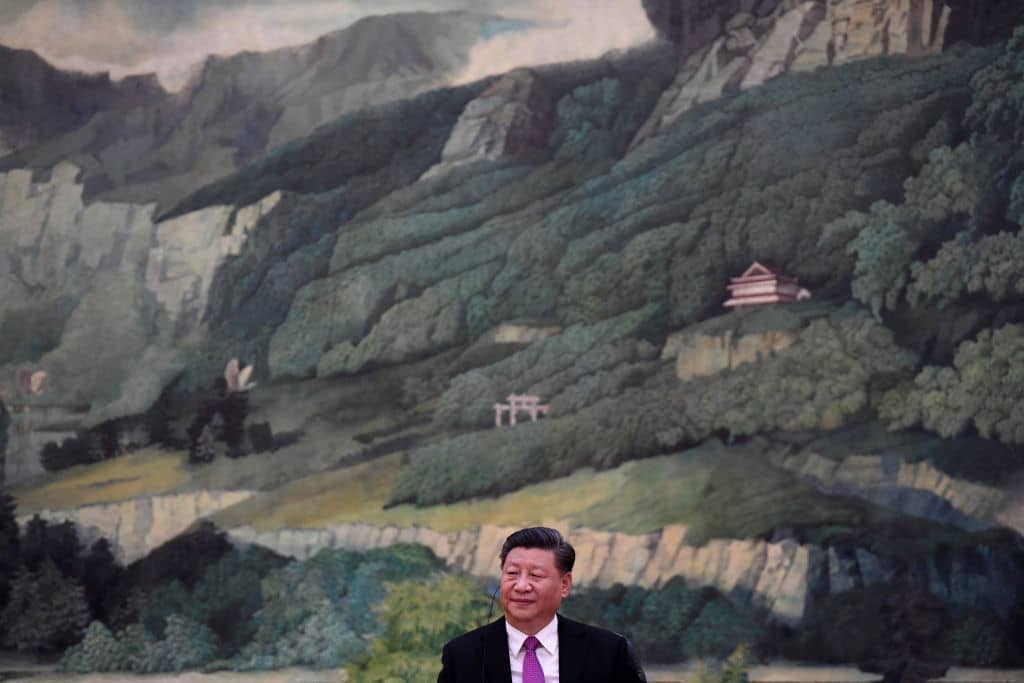Every year, China plants trees over an area the size of Ireland. The country may be the biggest polluter on Earth, but its reforestation efforts are enough to make Saint Greta look twice. In the last decade, the ‘Great Green Wall’ project has cost more than £73 billion, and the country aims to expand its forest cover to 24 per cent by the end of 2025 (the total area of the five largest European countries combined). So this week’s announcement that China has signed up to a deal to end deforestation by 2030 together with world-leading tree-cutters like Brazil and Indonesia is not, in fact, a huge surprise – or commitment – on Beijing’s side.
These days, most of China’s contribution to deforestation happens outside its borders
Of course, it wasn’t always like this. Mao Zedong thought he could overturn the laws of nature. China’s farmlands increased by 50 per cent between 1949 and 1978 – most of which came at the loss of forests in Yunnan and Manchuria (20 million hectares of these farmlands would, each year, suffer from drought or flooding caused by a lack of trees). During the Great Leap Forward, when quotas were thought enough to make crops grow and melting scrap metal was believed capable of turning China into a steel superpower, woods were chopped down to fuel communal furnaces (some archival documents show a third of China’s open forests were chopped down). Some parts of China have never recovered as the deforestation sped up desertification and worsened floods. It’s a period ominously called the ‘First Great Cutting’.
There have been a few more Great Cuttings since – during the Cultural Revolution (Mao, again) and in reform and opening, when mass privatisation of lands coincided with lax regulation on cutting trees. It wasn’t until 1998, when the worst flood in decades broke through the banks of the Yangtze, killing 4,000 people and displacing 15 million more, that the Chinese government began to replant trees in earnest. By then, Beijing had already distanced itself from Mao’s politics – they now realised that his ecology was wrong, too. The ‘Great Green Wall’ project has increased forest cover from 12 per cent in 1978, to 22 per cent this year.
As ever with China, headline numbers hide a more complicated picture. Most of the trees planted in China’s early reforestation efforts were dead or dying within 25 years. Chinese critics pointed out that the wrong trees were being planted in the wrong places (such as water-hungry trees in deserts). And there wasn’t enough variety either – biodiverse habitats actually decreased by 3 per cent despite this huge greening effort. ‘Tree coverage is not the issue anymore. But under the trees, it’s empty’, Dr Xu Jianchu, an academic at Kunming Institute of Botany, said in 2017. Wu Jiawei, a Sichuan conservationist calls them ‘green deserts’. The government says it’s paying attention and making more intelligent decisions on reforestation for the future.
These days, most of China’s contribution to deforestation happens outside its borders. Its hyper-demand for soybeans, lumber and beef means that it’s responsible for a quarter of the world’s deforestation each year, according to the WWF. Its financial institutions have poured more than £15 billion into major companies linked to deforestation since 2013, making China the sixth largest funder of global deforestation. Does the new deal take this into account? There’s been little mention of it, but given the accounting difficulty that countries still have in taking responsibility for their own exported emissions, it’s unlikely that exported deforestation can be easily accounted for.
Ending deforestation by 2030 is a noble but easy goal for China to sign up to. What really matters is the type of tree planting China is doing at home, and the scale of deforestation it’s contributing to abroad.







Comments